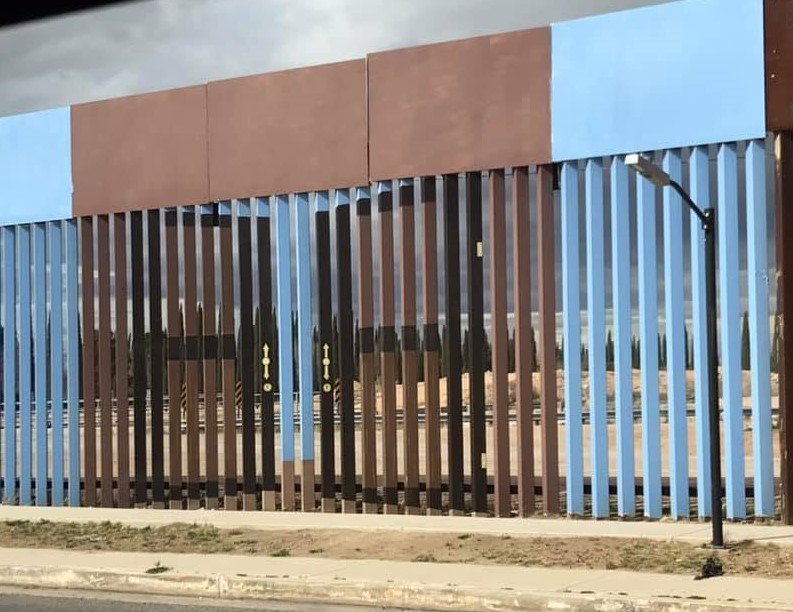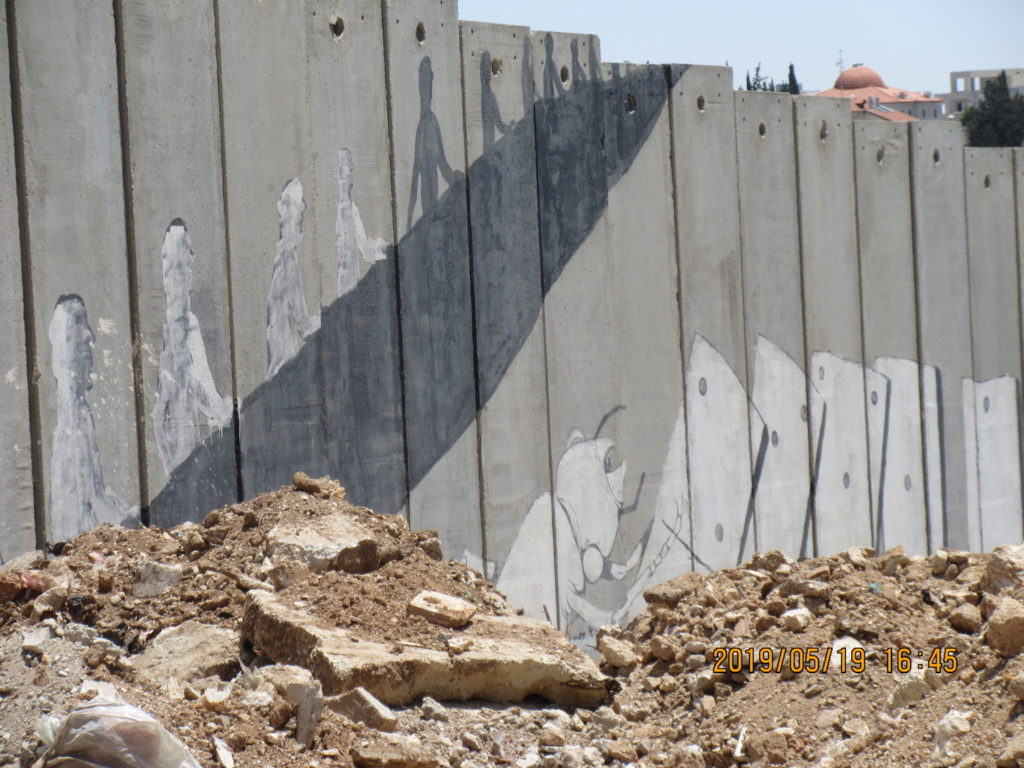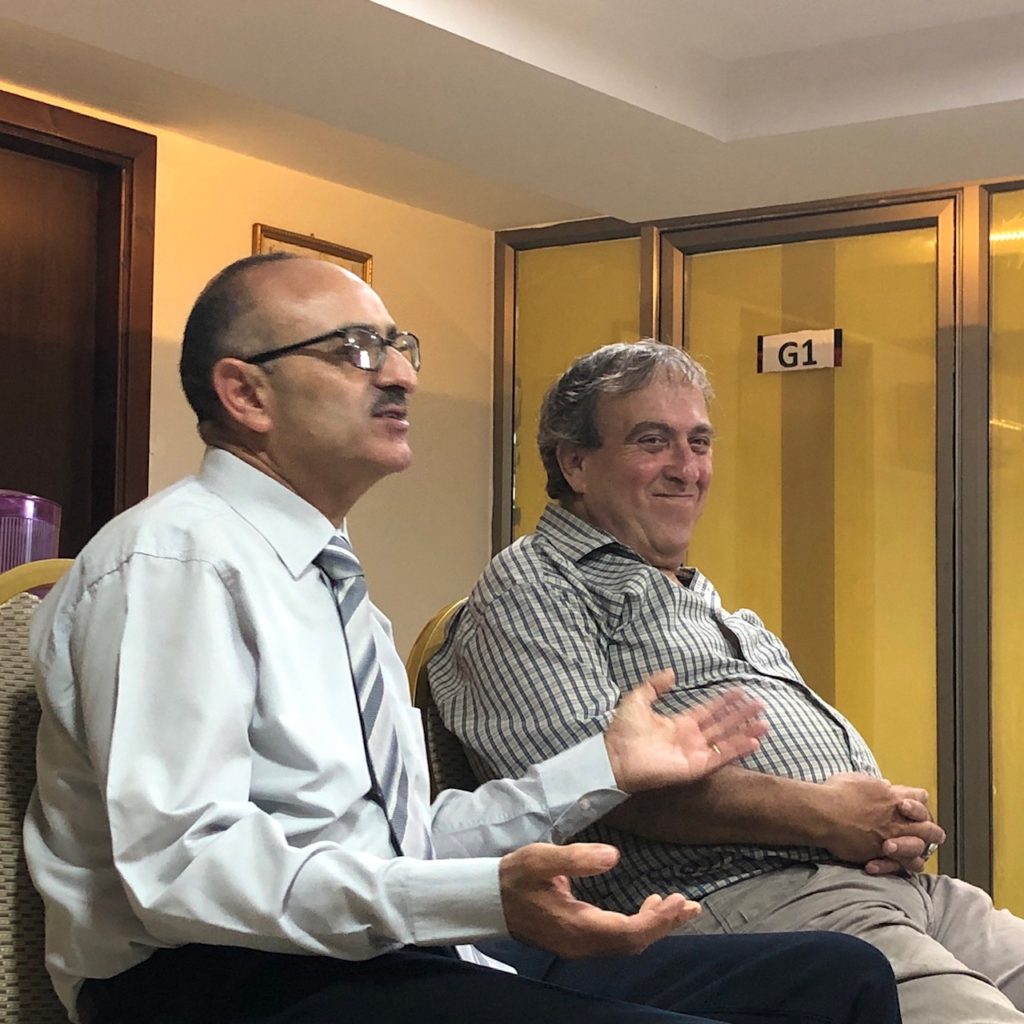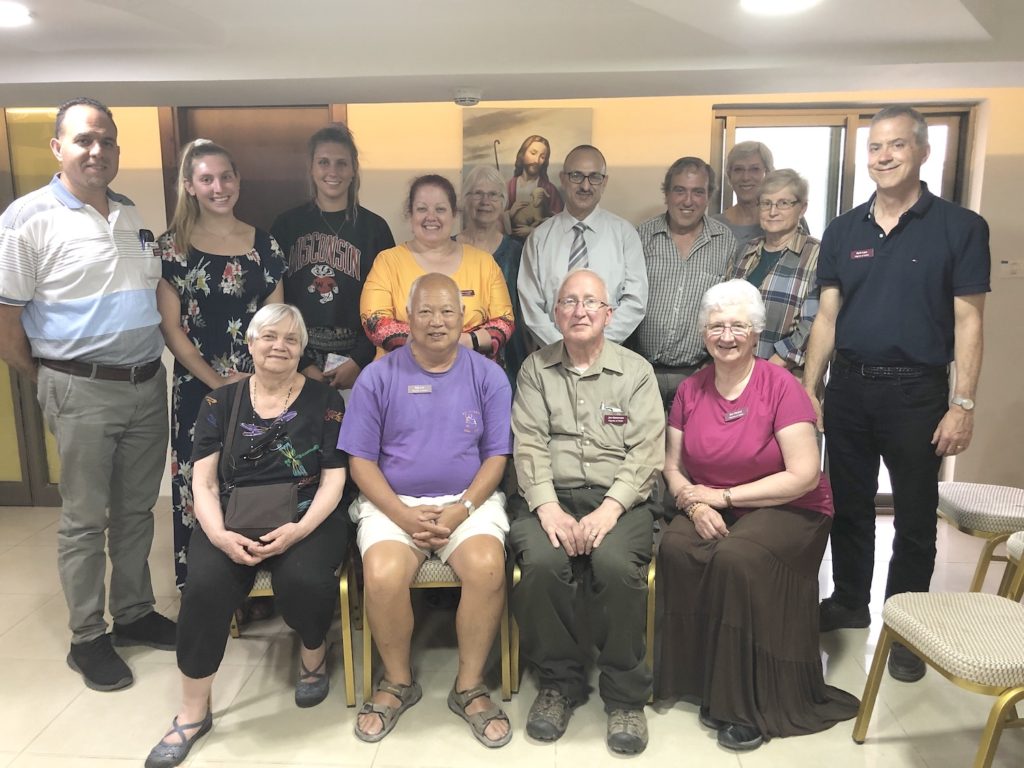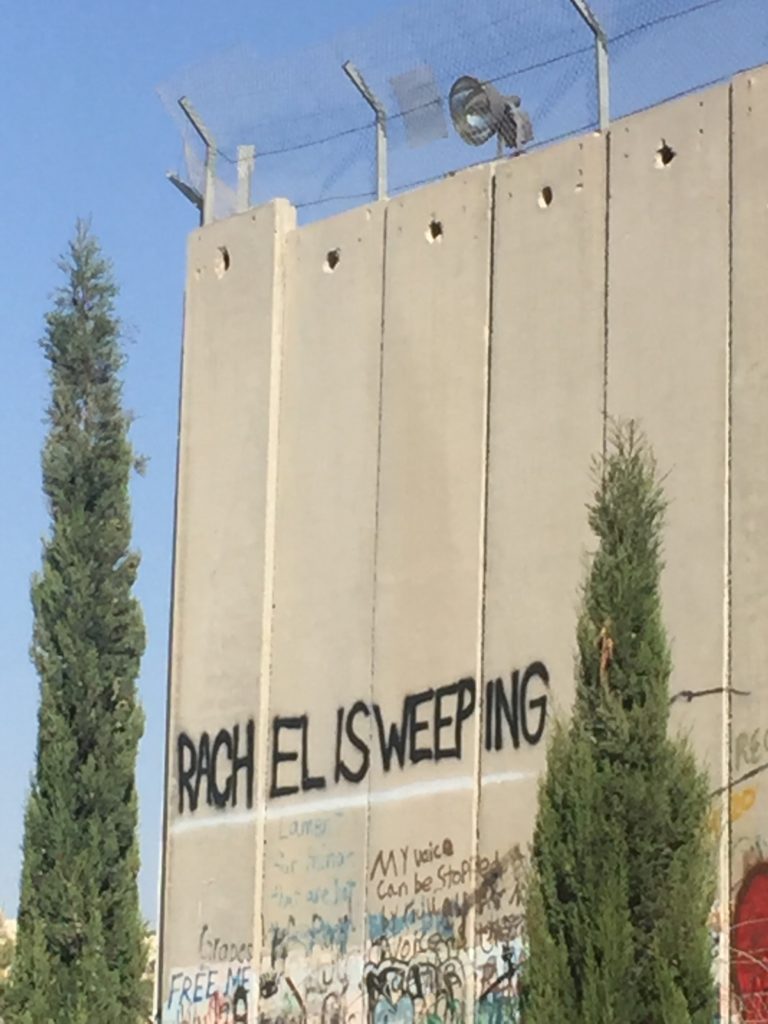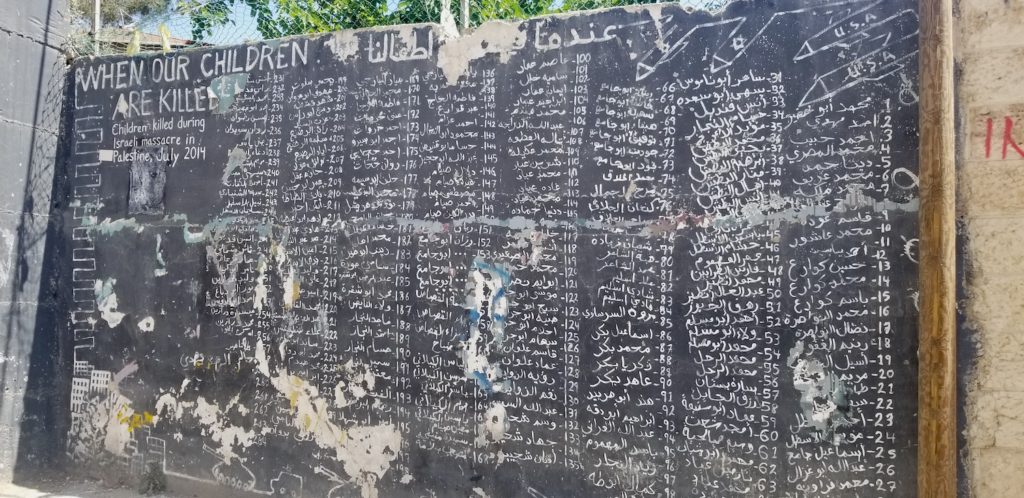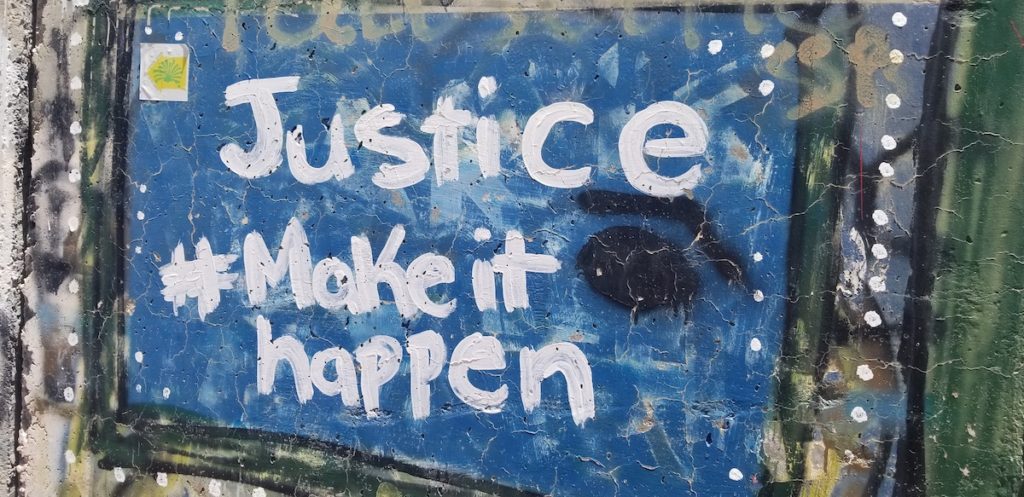Tuesday, May 21
~ by Peggy Gish
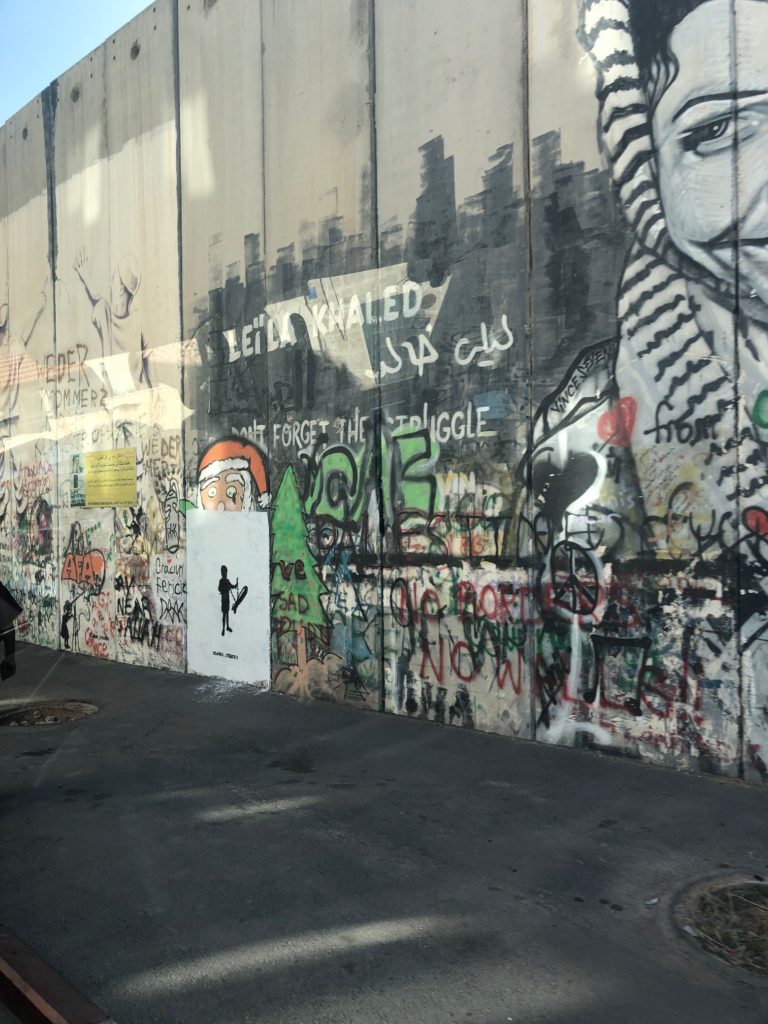
As our bus approached Jerusalem, many in our group saw The Wall for the first time. As we traveled around and south of the city, this massive structure, also called “the separation wall,” or more commonly, the “Apartheid Wall,” snaked up and down the hills. In the following days we spent time walking along the wall that loomed above us in Bethlehem and reflecting on what it means for the people here. We heard comments from local people, such as, “It’s illegal and ugly;” “It makes our communities more of a prison;” “It’s robbing us of even more land and sources of our water.” And on this trip, we have visited several Palestinian communities and whole valleys that Israel will soon confiscate by expanding the wall around them. This will force Palestinians there out of their homes and off their farms.
Looking at the wall here in Bethlehem, I couldn’t help but think of the wall my own country has built along the Mexico border. In the two weeks I recently spent on both the Mexico and Arizona side of that border, I see many things they have in common. Both are huge, monstrous structures, evoking dread and fear in people they affect. They’re both based in racism and colonialization, and help a more powerful nation suppress the flow of movement of a less powerful people and maintain the superiority of the powerful ethnic group. They separate families and communities, and sometimes families from their agricultural land. Both are incomplete and under construction and have segments made mainly of barbed wire. Both are “enhanced” with massive high tech surveillance equipment and coils of razor wire. They’re both the result of huge confiscations of land and natural resources belonging to the native peoples of the land. Both require massive funding and funnel money into rich corporations—money that would be better spent to care for human needs. Both walls cause tremendous suffering and needless deaths of those restricted.
But there are also differences between the US/Mexico border wall (US/MX) and the Israeli/Palestinian wall (IS/Pl). The latter is mostly solid concrete along with razor wire. The U.S. wall is mostly thick iron slats with some variations—some places a parallel wall of iron mesh. They both keep people out, but the US/MX wall does not encircle people and their communities, imprisoning them in their own side and progressively grabbing more and more land and aquifers, as the IS/PL wall does. The IS/PL wall is part of an ongoing strategic plan and process of taking more land and natural resources and to eventually force Palestinians from the entire area. Also the building of IS/PL wall is subsidized by the US and supported by other nations, while nations outside the US have been critical of the US/MX wall.
When witnessing and understanding more of the enormous affects the IS/PL wall has on the lives of the Palestinian people, and how it sabotages any just and peaceful settlement, it’s easy to feel angry or depressed. One of the hopeful things about both walls, however, is that on the Mexican and Palestinian sides, those feeling oppressed have created wall art, in the form of graffiti and paintings. These works of art try to cover up its ugliness or convey a political message—the truth about the walls and what they stand for.
Two of my favorite are the “open door” mural painted on the US/MX border at Agua Prieta, MX and the “escalator” and near-by “dominos falling down” murals at the wall in Bethlehem, which express hope for future liberation. These and many others have become a way of drawing international attention to and resisting the oppression these walls cause. They are among many actions that help to keep hope alive for those who are “yearning to breathe free.”
